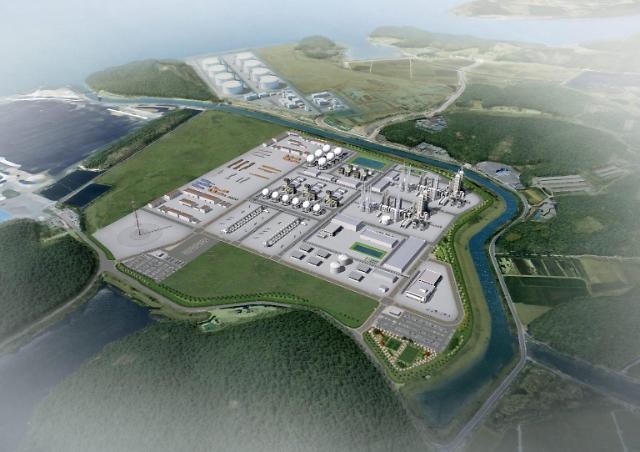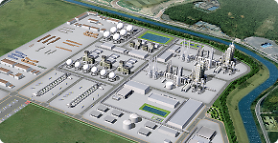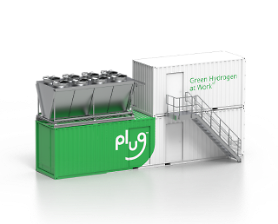
[Courtesy of SK E&S ]
SK E&S and Korea Midland Power (KOMIPO) would invest about five trillion won ($3.9 billion) to build the world's largest blue hydrogen production base near a liquefied natural gas (LNG) terminal in the southwestern coastal city of Boryeong. Government regulations were eased to allow the use of LNG cold energy that would reduce electricity consumption and carbon emissions.
Carbon capture and storage (CCS) technology will be used to remove carbon dioxide generated in producing blue hydrogen per year. Some 200,000 tons of gaseous hydrogen will be supplied through pipelines for hydrogen power generation, and 50,000 tons of liquefied hydrogen for charging stations.
"SK E&S wants to supply blue hydrogen with eco-friendliness, safety, and convenience by reducing costs and carbon emissions," SK E&S' hydrogen business department head Kwon Hyung-kyun said in a statement on December 20. The company aims to produce 30,000 tons of liquefied hydrogen annually from the end of 2023 through a hydrogen liquefaction plant under construction in the western port city of Incheon.
In July 2022, SK E&S invested $25 million in Monolith Materials, an American turquoise hydrogen company. Turquoise hydrogen sits somewhat between blue and green hydrogen and uses methane as a feedstock, but the process is driven by heat produced with electricity instead of fossil fuels. SK Group regards turquoise hydrogen as a strategic alternative to an energy shift from blue hydrogen to green hydrogen. Blue hydrogen is produced by applying carbon capture and storage to reduce carbon emissions. Green hydrogen can be produced through electrolysis to split water and release only hydrogen and oxygen.
Copyright ⓒ Aju Press All rights reserved.



